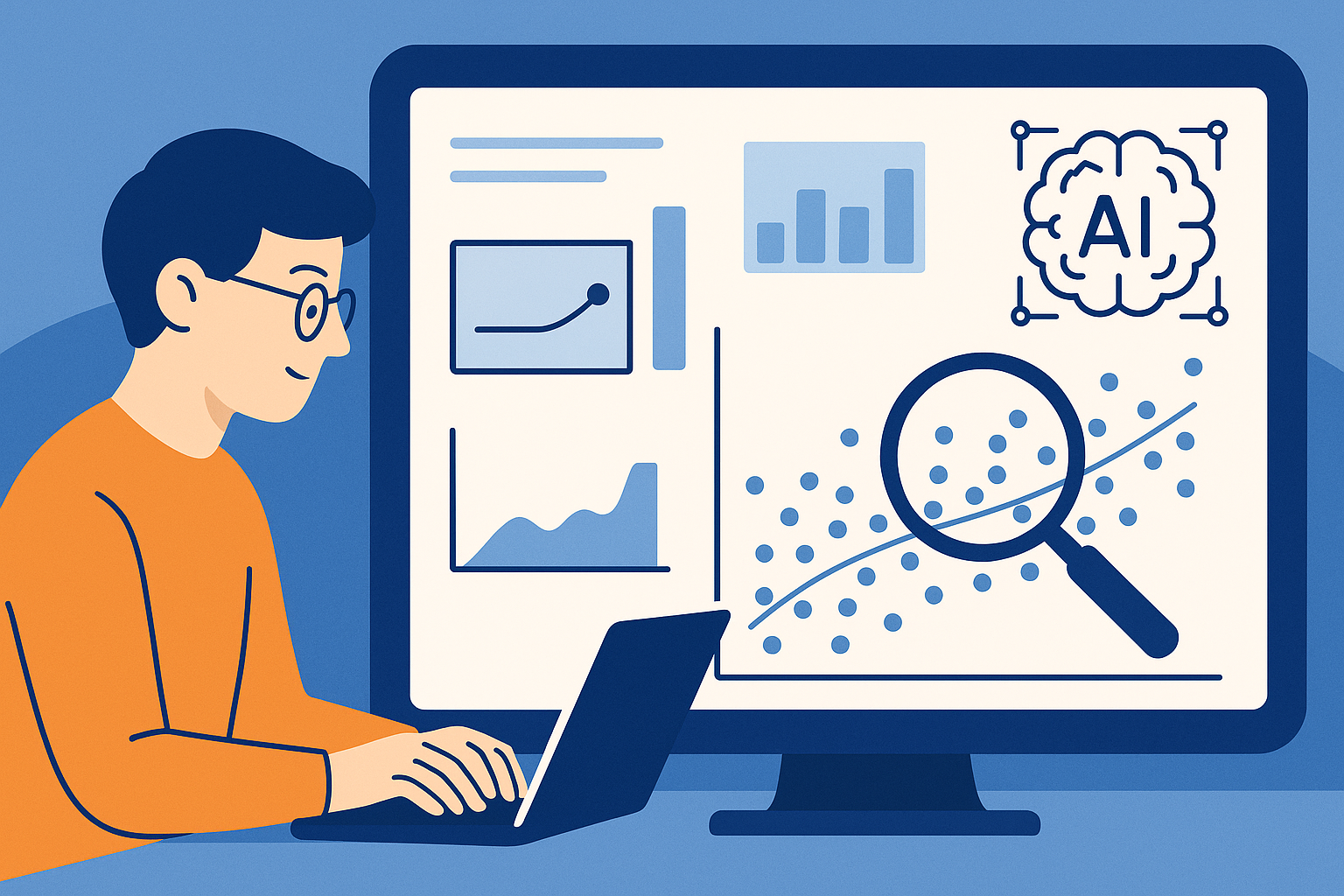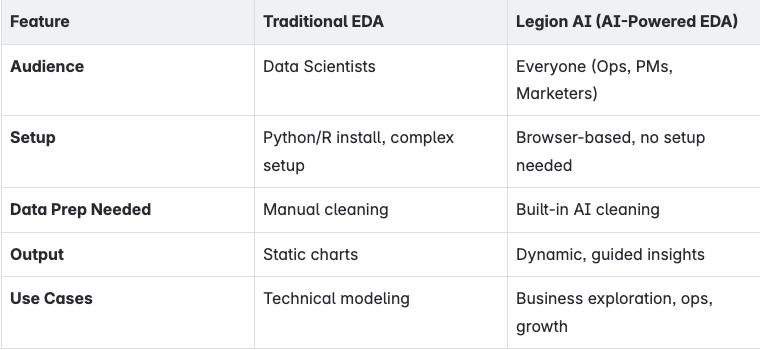Blog
July 31, 2025
Post Summary:
Way too often, teams make decisions based on gut feelings, wild guesses, or dashboards that just show what happened, not why it happened. To move from “I think” to “I know,” you need to dig deep into your data. That’s where Exploratory Data Analysis (EDA) comes in, and it’s super inspiring. But let’s be real, traditional EDA is slow and not built for today’s fast-paced world. That’s why modern teams are jumping on AI-powered EDA tools. These platforms are fast, easy to use, and let anyone, not just data scientists, uncover awesome insights from raw data in minutes. At Legion AI, we’re building one of these tools, and I’m pumped to share how it’s shaking things up!

EDA is all about exploring your data with visuals and stats before you start modeling or reporting. It’s like poking around to see what’s going on under the hood. Here’s why it’s a big deal:
Back in the day, EDA meant you needed technical skills, like knowing Python, R, or some fancy EDA software. That put it out of reach for most people. But now, AI-powered EDA tools are flipping the script, making it easy for anyone to jump in and explore.
Example: Imagine you’re a marketer looking at campaign data. You’ve got a dataset with clicks, impressions, and conversions, but you’re not sure what’s driving results. With traditional EDA, you’d need to code up some Python scripts or wrestle with Excel to spot trends. With an AI-powered tool, you just upload the data, and it shows you a chart of clicks vs. conversions, flags any weird outliers (like a day with zero clicks), and suggests which metrics might be connected. It’s like having a data buddy guiding you!
Whether you’re a software engineer, product manager, or growth marketer, modern EDA tools like ours at Legion AI make exploring data as easy as asking a question. No code, no setup, just straight-up insights. It’s super cool and saves a ton of time.
Here’s what these tools bring to the table:
Unlike traditional EDA tools lists, which are often about chip design stuff like Synopsys or Cadence (totally different vibe), our tool is built for business analytics and AI workflows. It’s all about helping fast-moving teams get answers quickly.
Example: Picture a product manager trying to figure out why users drop off in their app. They upload a dataset of user actions, and the AI tool instantly shows a funnel chart of where users leave. It suggests checking if a specific feature is causing the drop-off and even highlights an outlier, like a day when 50% of users bounced. No need to write Python code or wait for a data team to help. It’s fast and lets you focus on fixing the problem.
Here’s how our AI-powered EDA tool stacks up against traditional EDA:

These AI-driven tools are a whole new category in the EDA tools market. They mix AI smarts with the speed and flexibility that today’s teams need to stay ahead.
AI-powered EDA tools aren’t just for data nerds; they’re for anyone with a dataset and a decision to make. Here’s where they really rock:
Example: Let’s say you’re a growth marketer analyzing a recent ad campaign. You upload a dataset with ad spend, clicks, and conversions. The AI tool creates a chart showing clicks by channel, flags an outlier where one ad had zero conversions, and suggests checking if the ad copy or targeting was off. You can ask, “Which channel had the best ROI?” and get a clear answer with a visual to back it up. It’s like having a super-smart analyst on speed dial.
In the past, digging into your data meant waiting for a data scientist or struggling with code. It was slow and frustrating, especially if you’re not a tech wizard. But now, AI-driven EDA tools are making it super easy, fast, and even kind of fun to explore your data.
If you’re checking out the best EDA tools for business analytics or want to move beyond boring dashboards to real insight discovery, it’s time to try something new. Our tool at Legion AI is all about helping you go from gut feelings to data confidence without the bottlenecks.
We’re super stoked to hear from:
If you’re ready to make data exploration a breeze, let’s connect! Share your feedback, join the waitlist, and help us build the future of analytics.